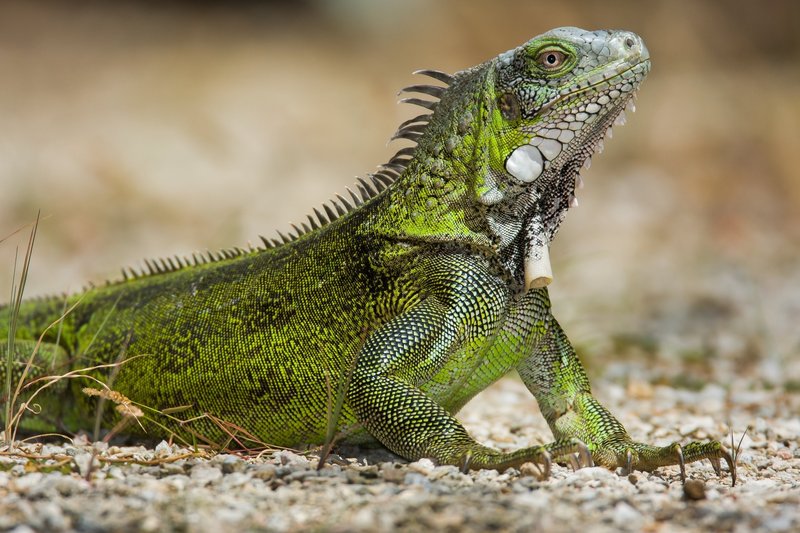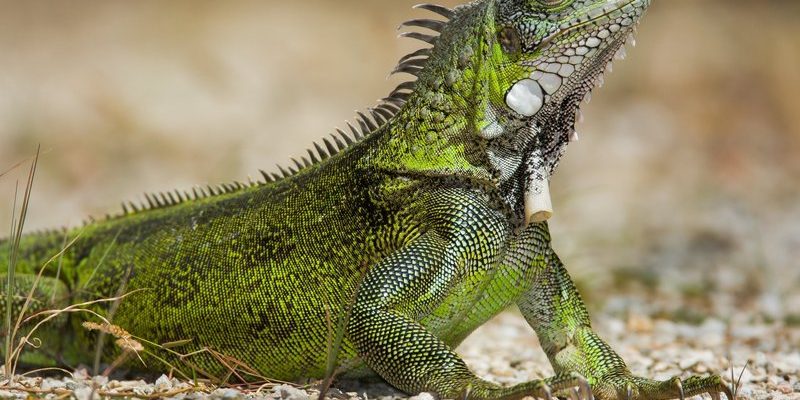
Iguanas, particularly the green iguana, are not just any reptiles; they’re like the ninjas of their habitats. They’ve developed unique adaptations that allow them to live in some of the toughest climates on Earth, from dry deserts to lush jungles. What’s even more interesting is how these adaptations reflect their ability to balance survival with their unique needs and behaviors. So, grab a cup of coffee, and let’s explore how these fascinating creatures manage to survive against the odds.
Physical Adaptations That Aid Survival
Iguanas boast a range of physical adaptations that set them up for success in harsh environments. First off, their scaly skin is one of their main defenses. This tough outer layer helps prevent water loss, which is crucial in dry climates. Think of their skin like a high-tech rain jacket—it keeps moisture in while keeping the harsh elements at bay.
Another standout feature is their long tail. This isn’t just for show; it acts as a counterbalance when they’re climbing or running. Additionally, their tail can also serve as a defense mechanism. If threatened, an iguana can drop its tail to escape predators. It’s like a magician’s trick—poof! The tail distracts the predator, giving the iguana a chance to escape.
Finally, iguanas have specialized feet with sharp claws that help them grip tree branches and rocky surfaces. This adaptation is perfect for their often arboreal lifestyle, allowing them to navigate difficult terrain with ease. Can you imagine trying to climb a tree with slippery shoes? These claws make their life much easier!
Dietary Flexibility: Eating What They Can Find
Here’s the thing: iguanas are primarily herbivorous, meaning they mostly eat plants. But in tough environments where food can be scarce, they’ve developed a knack for eating a variety of plant materials. They munch on leaves, flowers, and fruits—whatever they can manage to find.
This flexibility in their diet is a lifesaver. If their favorite food isn’t available, they’ll simply adapt and eat whatever is nearby. For example, in drought conditions, they might feed on tougher, spikier plants that other animals shy away from. This adaptability not only helps them survive but also reduces competition with other animals looking for food.
Also, they have an interesting aspect to their feeding habit—they often bask in the sun after eating. This helps them digest their food effectively. Imagine having a cozy nap after a big meal; it’s a similar concept. This sunlight exposure boosts their metabolism, allowing them to break down nutrients from the plants more efficiently.
Behavioral Adaptations: Smart Moves in Harsh Conditions
Iguanas are not just creatures of habit; they’re really smart about how they behave, especially in tough conditions. One of their most important behavioral adaptations is basking in the sun. This might sound simple, but it’s critical for their survival. Iguanas are ectothermic, meaning they rely on external heat sources to regulate their body temperature.
When it’s hot, you can find them lounging on a rock or branch. This helps them stay warm and active, especially in cooler morning hours. However, when the heat becomes too intense, they seek shade or burrow into cooler ground. It’s like pulling an umbrella out on a sunny day—knowing when to seek relief is key to staying safe.
Another smart move they make is territorial behavior. Iguanas can be quite protective of their space, especially when it comes to mating. This behavior helps them secure essential resources, like food and basking spots. By claiming territory, they can ensure a steady supply of necessities, even in challenging environments.
Water Conservation Techniques
Let’s talk about an essential element of survival: water. In harsh environments, water can be more precious than gold. Iguanas have a few clever tricks that help them conserve water. First of all, their skin, as mentioned earlier, helps reduce transpiration. This means they lose less moisture, which is crucial in dry habitats.
They are also known for their ability to drink large amounts of water when it’s available. After heavy rains, for instance, they’ll soak up as much water as they can. It’s like filling a tank—this allows them to store enough moisture to get through dry spells. Look for them drinking from puddles or even dew on leaves; they’re excellent at seizing opportunities.
Additionally, iguanas are known to absorb moisture through their skin. This fascinating ability allows them to hydrate without needing to drink directly from a water source. When the air is humid, they can soak up the moisture, keeping themselves hydrated without much effort. Talk about a clever survival strategy!
Habitat Selection: Choosing the Right Environment
Iguanas have a keen sense of where they thrive best. They often choose habitats that provide the right balance of sunlight, shelter, and food. For instance, they typically prefer tropical and subtropical areas with plenty of trees and vegetation. This environment offers them both food sources and places to hide from predators.
Moreover, iguanas are known to be resourceful when it comes to finding shelter. They often take refuge in burrows or under bushes, which can provide shade and protection. This is particularly important during the hottest parts of the day when they need to avoid overheating.
You might be surprised to learn that iguanas can also adapt to urban settings. In cities, they might live in parks or gardens, where there’s sufficient greenery. This flexibility shows just how resilient they are and how well they can adjust their habitat preferences to find a way to survive.
Predator Awareness: Staying Safe in the Wild
Living in harsh environments often means dealing with predators. Iguanas face threats from birds of prey, snakes, and even humans. Their survival depends on being alert and having strategies to avoid these dangers.
One of their primary defenses is camouflage. Their green color blends remarkably well with leaves and branches, making it harder for predators to spot them. It’s like wearing a natural disguise—very clever! Alongside this, iguanas have a knack for staying very still when they sense danger. This instinctual behavior helps them avoid detection.
If threatened, iguanas can also display aggressive behavior. They might hiss, puff up, or even bite if cornered. Although they tend to flee rather than fight, these tactics show that they’re willing to stand their ground if needed. It’s a reminder that courage can come in many forms, even in the animal kingdom.
The iguana’s ability to survive in harsh environments is a true testament to the wonders of nature. From their impressive physical adaptations to smart behavioral strategies, these reptiles are masters of resilience. They’ve shown us that survival isn’t just about enduring; it’s about adapting, being clever, and making the most of what you have.
So, the next time you see an iguana lounging in the sun or munching on a leaf, take a moment to appreciate their incredible journey. They remind us that even in the toughest circumstances, there’s always a way to thrive. Isn’t nature just fascinating?

